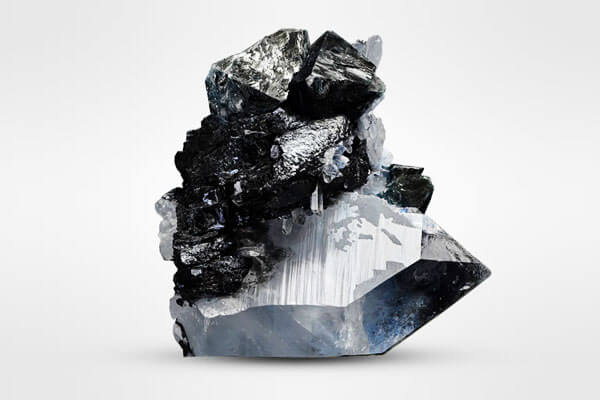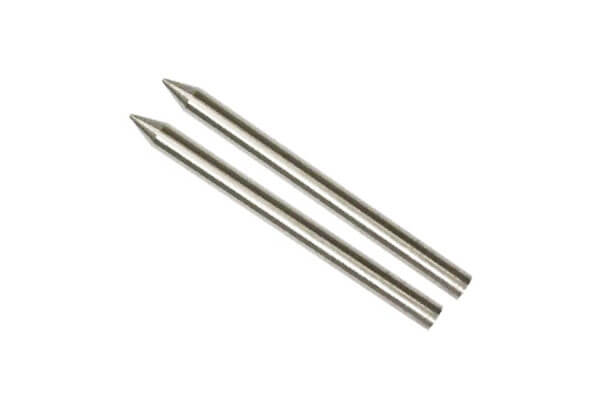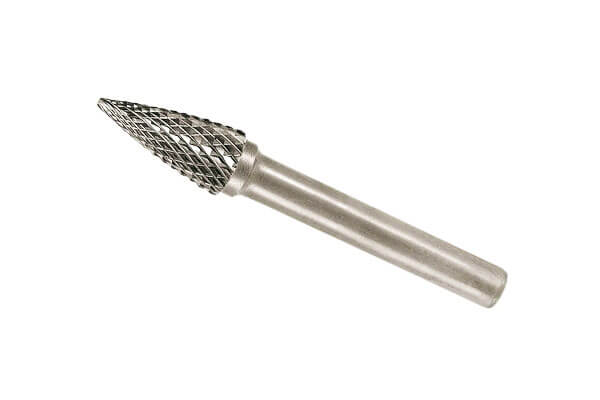1. Zavedení
Wolfram, also known as wolfram, captivates engineers and scientists with its extraordinary attributes.
With a staggering melting point of approximately 3422°C and a density of 19.3 g/cm³, tungsten offers unparalleled performance in extreme environments.
Navíc, its superior thermal conductivity and robust wear resistance ensure that tungsten-based components excel in high-temperature and high-stress applications.
This article aims to provide a multi-faceted analysis of tungsten—from its early discovery and historical milestones to modern processing techniques and future trends,
while incorporating key data and authoritative insights to guide readers through its complex landscape.
2. Historické pozadí a vývoj
Discovery and Early Uses
Tungsten first emerged on the scientific stage in the late 18th century.
Early researchers quickly recognized its potential, and initial applications focused on its use in specialized alloys and lighting filaments.

Historicky, tungsten’s resistance to heat and corrosion set it apart from other metals, paving the way for its early adoption in niche industrial roles.
Industrial Revolution and Beyond
Během průmyslové revoluce, tungsten’s inherent strength and high-temperature stability made it an essential material for improving machinery and manufacturing equipment.
V důsledku toho, It transitioned from experimental usage to a strategic resource in various engineering applications.
As technological demands evolved, tungsten cemented its reputation in sectors such as automotive, obrana, a energie.
Technological Milestones and Processing Evolution
Key breakthroughs in tungsten extraction and alloy development reshaped its production landscape.
Například, advancements in powder metallurgy and refining methods not only increased purity but also expanded tungsten’s usability.
V průběhu času, traditional processing techniques yielded to modern technologies such as advanced sintering and forging, which enhance both material performance and production efficiency.
These milestones underscore tungsten’s dynamic evolution and its continuous adaptation to meet the challenges of modern industry.
3. Key Properties of Tungsten
Fyzikální vlastnosti
Extremely High Melting Point:
- Datový bod: Approximately 3422°C (6192° F.)
- Význam: This is the highest melting point among all metals, which allows tungsten to maintain structural integrity in extreme high-temperature environments.
High Density:
- Datový bod: Kolem 19.3 g/cm³
- Aplikace: Its density makes tungsten ideal for use in counterweights, ballast systems, and radiation shielding where high mass in a small volume is critical.
Tepelná vodivost:
- Datový bod: Roughly 173 W/m·K at room temperature
- Prospěch: Enables efficient heat dissipation in high-temperature applications, particularly in electrical and lighting industries.
Elektrická vodivost:
- Poznámka: Ačkoli ne tak vodivé jako měď, tungsten’s electrical properties are robust enough for applications in electronics, such as electrodes and filaments.
Mechanické vlastnosti
Tungsten’s mechanical performance is characterized by its ability to withstand severe stresses:
Vysoká pevnost v tahu:
- Datový bod: Often exceeding 750 MPA
- Dopad: This high strength makes tungsten suitable for use in components that must resist deformation under heavy loads.
Ztuhlost (Youngův modul):
- Datový bod: Přibližně 400 GPA
- Následek: Tungsten’s rigidity ensures minimal elastic deformation, which is vital in precision engineering and structural applications.
Odolnost vůči dotvarování:
- Výhoda: Maintains mechanical properties under prolonged exposure to high temperatures
- Výzva: Však, its inherent brittleness requires careful handling and specialized processing techniques to avoid fractures.
Chemické vlastnosti
Oxidation and Corrosion Resistance:
- Detail: Tungsten resists oxidation and corrosion even under harsh conditions, such as high temperatures and aggressive chemical environments.
- Practical Benefit: This stability extends the service life of tungsten components in industries like aerospace and defense.
Chemická inertnost:
- Výsledek: Its inert behavior makes tungsten a reliable material in environments where chemical reactions must be minimized.
4. Manufacturing Processes of Tungsten Metal
Manufacturing tungsten metal involves a series of complex and highly specialized processes.
These processes, developed over decades of innovation, transform raw tungsten ore into a refined material capable of withstanding extreme conditions.
Níže, we break down the manufacturing journey into several critical stages.
Extrakce a rafinace
The first step in tungsten production begins with the extraction of tungsten ore, which typically comes in the form of wolframite or scheelite. Key stages include:
Ore Mining and Concentration:
- Proces: Tungsten ore is mined using open-pit or underground methods. Subsequent crushing and grinding liberate tungsten minerals from the surrounding rock.
- Datový bod: The concentration process can yield tungsten oxide (WO₃) levels as high as 80% in high-grade ores.
Chemical Processing and Refining:
- Proces: Chemical leaching and precipitation techniques isolate tungsten from impurities.
Modern refining processes, such as the solvent extraction method, produce high-purity tungsten concentrates. - Transition: Navíc, these refining techniques have improved yield rates while minimizing environmental impact through advanced waste treatment systems.
Production Techniques
Prášková metalurgie:
- Sintering and Pressing:
-
- Popis: Tungsten powder, produced from the refined concentrate, is compacted under high pressure and sintered at temperatures near 1400°C to 1500°C.
- Výhody: This method produces uniform, dense components ideal for applications requiring high strength and durability.
Forging and Rolling:
- Popis: V některých případech, tungsten or tungsten alloys are further processed by forging or rolling.
- Datový bod: Forging temperatures often exceed 2000°C to ensure proper plastic deformation despite tungsten’s high melting point.
- Výsledek: These techniques shape tungsten into plates, pruty, or wires while enhancing its mechanical properties.

Tungsten Carbide Production:
- Proces: By combining tungsten with carbon at high temperatures, manufacturers produce tungsten carbide.
- Aplikace: Tungsten carbide is celebrated for its exceptional hardness, making it indispensable in cutting tools and mining machinery.
- Transition: Navíc, the integration of tungsten carbide into composite materials has expanded its utility in high-wear industrial applications.
Processing Challenges
Vysoký bod tání:
- Výzva: Tungsten’s melting point of approximately 3422°C requires specialized equipment and controlled environments.
- Řešení: Manufacturers utilize advanced high-temperature furnaces and controlled atmospheres to mitigate oxidation and material degradation.
Inherent Brittleness:
- Výzva: Tungsten’s high hardness and limited ductility complicate machining and forming processes.
- Řešení: Engineers often incorporate powder metallurgy techniques and carefully optimized thermal treatments to enhance workability without sacrificing performance.
Spotřeba energie:
- Datový bod: Tungsten production processes are energy-intensive, contributing to higher production costs.
- Zmírnění: Continuous research aims to improve energy efficiency through process optimization and the integration of renewable energy sources.
Úvahy o životním prostředí
Waste Management and Emission Controls:
- Practice: Modern facilities implement advanced waste treatment systems to capture and recycle byproducts from ore processing and refining.
- Dopad: These measures not only reduce environmental footprints but also comply with stringent regulatory standards.
Recycling Initiatives:
- Popis: Tungsten’s recyclability plays a crucial role in sustainable manufacturing.
- Prospěch: Recycling tungsten reduces the demand for new ore extraction and cuts energy consumption by up to 95% ve srovnání s primární produkcí.
Sustainable Process Innovations:
- Příklad: Innovations in chemical refining and high-efficiency sintering have led to significant reductions in both energy use and emissions, ensuring a more sustainable production cycle.
Souhrnná tabulka
| Fáze | Key Process | Notable Data/Benefits |
|---|---|---|
| Extrakce a rafinace | Ore mining, crushing, chemical leaching | Tungsten oxide purity up to 80%; lepší zpracování odpadu |
| Prášková metalurgie | Slinování & lisování | Sintering temperatures: 1400°C-1500°C; jednotný, high-density parts |
| Forging and Rolling | High-temperature shaping | Forging above 2000°C; Vylepšené mechanické vlastnosti |
| Tungsten Carbide Production | Combining tungsten with carbon | Exceptional hardness for cutting tools and mining applications |
| Environmental Measures | Odpadové hospodářství, recyklace | Až do 95% energy savings via recycling; compliance with regulations |
5. Applications of Tungsten Metal
Průmyslové aplikace
Karbid wolframu, derived from tungsten, remains essential in producing durable cutting tools, Těžební stroje, and wear-resistant components.
Its ability to maintain integrity under abrasive conditions underlines its industrial significance.

Aerospace a obrana
V kosmonautika a obrana, tungsten contributes to critical components such as counterweights, ballast, and radiation shields.
Navíc, its high density finds application in armor-piercing projectiles and other specialized military equipment, where precision and reliability are paramount.
Electronics and Lighting
Tungsten’s role in elektronika and lighting cannot be overstated. Historicky, tungsten filaments powered incandescent bulbs, while today,
tungsten electrodes and contacts continue to support the functionality of welding equipment and high-performance electronic devices.
Medical and Emerging Applications
V lékařský pole, tungsten’s radiopaque properties enhance imaging accuracy and are used in diagnostic devices.
Navíc, emerging sectors, including additive manufacturing and renewable energy, increasingly rely on tungsten for its high-temperature stability and structural performance.
6. Advantages and Limitations of Tungsten
Tungsten continues to be a critical material in high-performance industries due to its unique combination of properties.
V této části, we explore the advantages that make tungsten indispensable and the limitations that engineers must consider during its application.
6.1. Advantages of Tungsten
Tungsten offers a range of benefits that contribute to its widespread use in extreme environments:
Exceptional High-Temperature Resistance:
- Datový bod: Tungsten maintains stability at temperatures up to approximately 3422°C, the highest melting point among metals.
- Dopad: This property allows tungsten to function effectively in applications such as aerospace components and high-temperature furnaces.
High Density and Durability:
- Datový bod: With a density of around 19.3 g/cm³, tungsten provides outstanding mass and strength.
- Aplikace: Its weight is ideal for counterweights, ballast systems, and radiation shielding, ensuring that components remain robust under mechanical stress.
Superior Thermal and Electrical Conductivity:
- Datový bod: Tungsten exhibits a thermal conductivity of roughly 173 W/m · k, which facilitates efficient heat dissipation.
- Prospěch: These characteristics support its use in lighting filaments, electrical contacts, and heat sinks in electronic devices.
Robustní mechanické vlastnosti:
- Data Points: Tensile strengths exceeding 750 MPa and a Young’s modulus near 400 GPa reflect tungsten’s rigidity and strength.
- Následek: These attributes enable tungsten to withstand significant mechanical loads and maintain structural integrity in demanding applications.
Chemical Stability:
- Charakteristický: Tungsten resists oxidation and corrosion, even in aggressive chemical environments.
- Výsledek: This chemical inertness extends the service life of tungsten components in sectors such as defense and industrial manufacturing.
6.2. Limitations of Tungsten
Despite its exceptional performance, tungsten does present several challenges:
Inherent Brittleness:
- Problém: Tungsten’s high hardness often comes at the expense of ductility, making it susceptible to cracking under impact or bending stresses.
- Následek: Engineers must employ specialized processing techniques, such as powder metallurgy and controlled thermal treatments, to mitigate brittleness.
Processing and Machining Difficulties:
- Výzva: The high melting point of tungsten necessitates the use of advanced, high-temperature equipment, which complicates machining and forming processes.
- Dopad: V důsledku toho, tungsten processing tends to be energy-intensive and costly, affecting overall production efficiency.
Vysoké výrobní náklady:
- Insight dat: Due to its complex processing requirements and the need for specialized manufacturing techniques, tungsten and its alloys are typically more expensive than other metals.
- Kompromis: While the performance benefits are substantial, budget constraints may limit its use in cost-sensitive applications.
Limited Availability of Ductile Forms:
- Observation: Although tungsten provides excellent strength, its limited ductility restricts the range of shapes and forms that can be easily produced.
- Řešení: Manufacturers often develop composite materials or hybrid alloys to combine tungsten’s favorable properties with improved workability.
7. Future Trends and Innovations in Tungsten Metal
Advanced Tungsten-Based Composites
Tungsten metal matrix composites (W-MMCs) are gaining traction for specialized applications requiring extreme durability and precision.
These composites blend tungsten with metals like nickel, měď, or molybdenum to enhance machinability, Stínění záření, a tepelná stabilita.
- DENSIMET® and INERMET®: High-density (>90% W) composites used in aerospace radiation shielding and medical devices, offering superior strength and non-magnetic properties.
- Tungsten-Copper (WCu): Combines tungsten’s heat resistance with copper’s conductivity, ideal for electrical contacts and heat sinks in high-voltage systems.
- SPARKAL®: Tailored for spark erosion (EDM) electrodes, improving precision in mold manufacturing.
Inovace: Emerging composites like tungsten-carbide-copper (WCCu) aim to optimize arc erosion resistance for next-gen energy grids.
Sustainable Mining and Extraction Technologies
The tungsten industry is adopting eco-friendly practices to address resource scarcity and environmental concerns:
- Molten Salt Electrolysis: Reduces energy consumption by 30% compared to traditional smelting, enabling cleaner extraction from low-grade ores.
- Deep-Sea and Space Mining: Exploration of oceanic crusts and asteroid resources to secure tungsten supplies amid terrestrial depletion.
- Recycling Initiatives: Closed-loop systems recover tungsten from industrial scrap (NAPŘ., řezací nástroje, elektronika), reducing reliance on primary mining.
Digital Integration and AI-Driven Optimization
Advanced technologies are revolutionizing tungsten processing and quality control:
- TCS PREMAP/PEACOCK Platforms: AI-powered systems predict demand, optimize logistics, and detect defects in real time, cutting production costs by 15%.
- Aditivní výroba: 3D-printed tungsten components (NAPŘ., Části jaderného reaktoru) enable complex geometries unachievable via conventional methods.
- Smart Sensors: IoT-enabled devices monitor wear in tungsten-based machinery, extending component lifespans by 40%.
Expansion into High-Tech Applications
Tungsten’s unique properties are unlocking novel uses in cutting-edge sectors:
- Nuclear Fusion: Tungsten plasma-facing components in reactors like ITER withstand temperatures exceeding 10,000°C.
- Průzkum prostoru: Radiation shields and propulsion systems for satellites and Mars rovers leverage tungsten’s density and stability.
- Medical Technology: Tungsten alloys in cancer radiotherapy collimators improve precision while minimizing patient exposure.
Regulatory and Sustainability Frameworks
Global regulations are driving innovation in tungsten’s lifecycle management:
- EU Ecodesign Regulations: Mandate recyclability and low-carbon production for tungsten products, pushing manufacturers to adopt green practices.
- Circular Economy Models: Partnerships between mining firms and tech companies aim to reuse 80% of tungsten waste by 2030.
Challenges Ahead
- Cost Barriers: High energy demands for tungsten refining (NAPŘ., Prášková metalurgie) remain a hurdle for small-scale producers.
- Supply Chain Risks: Geopolitical tensions in tungsten-rich regions (NAPŘ., Čína) necessitate diversification through synthetic alternatives.
8. Závěr
Stručně řečeno, tungsten metal continues to demonstrate its unparalleled value in modern technology and industry.
Its unique physical and chemical properties, combined with innovative manufacturing techniques, position tungsten as a material of choice for extreme applications.
Although challenges such as brittleness and high processing costs remain, ongoing research and digital advancements promise to overcome these hurdles.
Těšíme se dopředu, tungsten is poised to drive further innovation,
ensuring its critical role in powering the next generation of high-performance systems while supporting sustainable manufacturing practices.



I’m really loving the theme/design of your weblog. Do you ever run into any web browser
compatibility issues? A small number of my blog visitors have complained about my site not operating
correctly in Explorer but looks great in Firefox. Do you have any recommendations to help fix
this issue?
Sorry, I don’t have any good suggestions for your browser adaptation problem. Maybe you can try using Chatgpt to try to solve it.